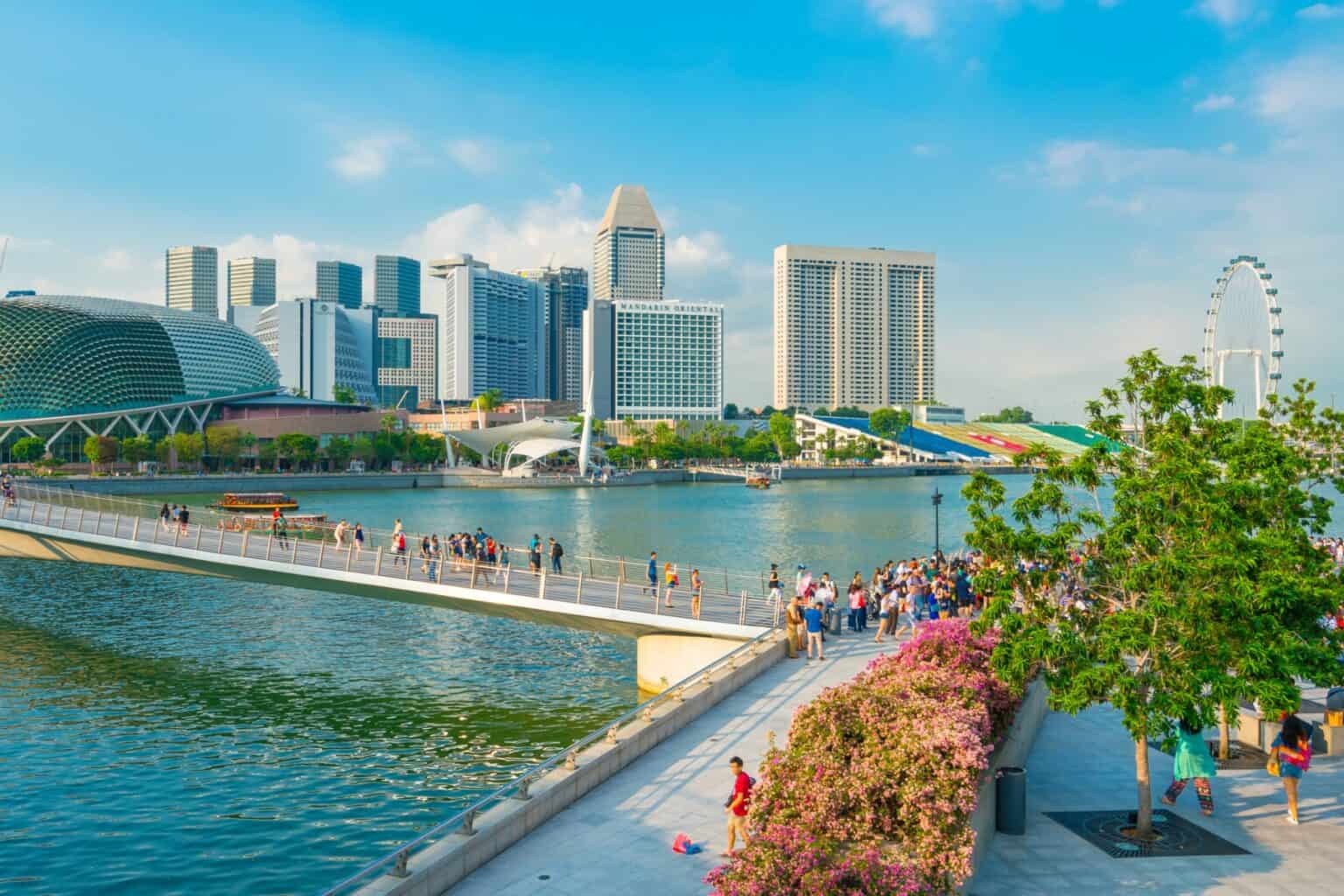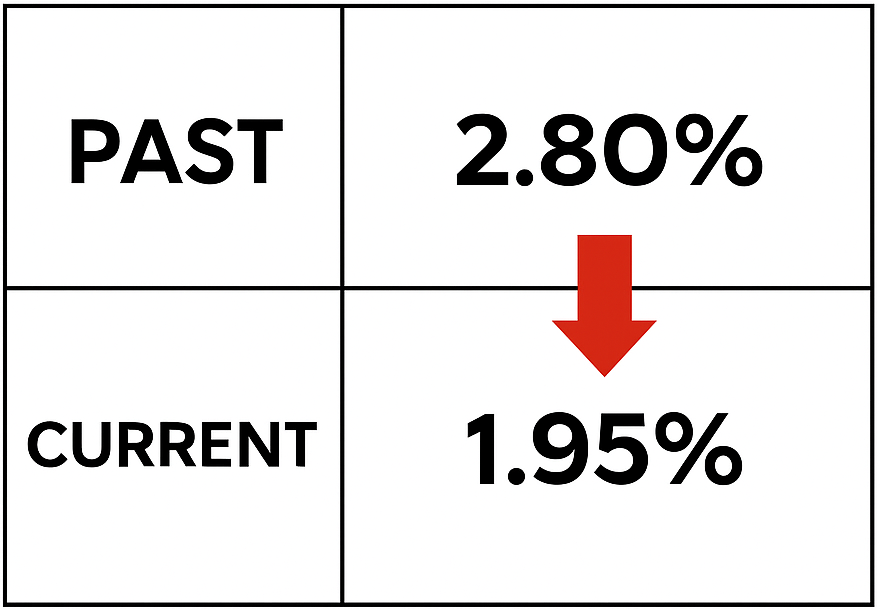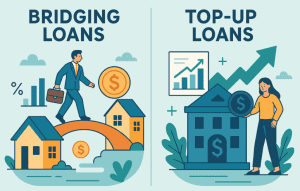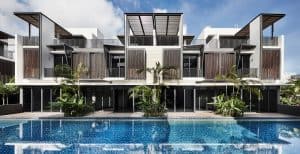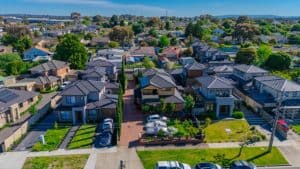Planning to buy property in Singapore? Whether you’re eyeing a BTO flat, resale HDB, or private condo, understanding the URA Master Plan 2025 gives you a serious edge.
This government blueprint outlines where future growth, transformation, and value uplift will happen — long before prices catch up.
In this guide, we break down how to read the URA Master Plan, spot hidden property gems, and use URA SPACE like a pro. Plus, we’ll show you how to align your buying strategy with upcoming zoning changes, plot ratio insights, and urban transformation hotspots.
Let’s dive in — your next smart move might just be a Master Plan away.
What Is the URA Master Plan and Why Does It Matter?
The URA Master Plan is Singapore’s official land use roadmap — a detailed guide that shows how each part of the island will develop over the next 10 to 15 years. It’s reviewed every five years and is key to understanding where new homes, parks, business hubs, and MRT lines will pop up.
Savvy buyers and investors often refer to it before deciding where to buy. Why? Because this document reveals future potential, long before it’s reflected in property prices.
How does the Master Plan shape Singapore’s urban future?
From Tengah’s “forest town” to the Greater Southern Waterfront, the Master Plan doesn’t just build homes — it builds future lifestyles. Every zoning decision is carefully planned to balance liveability, sustainability, and economic growth.
URA’s strategy includes:
- Decentralising jobs across new regional centres (e.g., Jurong Lake District)
- Adding green connectors, parks, and car-lite town concepts
- Integrating residential zones with commercial and transport networks
Here’s a tip, check whether a residential site is near a proposed mixed-use zone or transport hub — this usually signals better long-term capital appreciation.
What’s the difference between the Master Plan and Long-Term Plan?
Many confuse the Master Plan with the Long-Term Plan (previously the Concept Plan). Here’s a quick comparison:
URA Master Plan vs Long-Term Plan: Which Planning Tool Suits Your Property Goals?
| Planning Aspect | URA Master Plan | Long-Term Plan |
|---|---|---|
| Timeframe | 10–15 years | 40–50 years |
| Level of Detail | Specific land use & plot ratio data | Broad land use strategy & national development goals |
| Use Case | For current property decisions & site analysis | For long-term trends, zoning shifts & population planning |
The Master Plan is what you’ll actually use when evaluating property — it shows zoning, height limits, and development intensity for every land parcel via URA SPACE.
Why is it crucial for property buyers and investors?
Buying a home without checking the URA Master Plan is like driving blindfolded.
Here’s why it matters:
- It shows what’s coming next: New MRT lines, commercial nodes, or park connectors can dramatically affect home value.
- It reveals future land use nearby: That empty field next door might become a school… or a warehouse.
- It helps you align mortgage decisions with long-term value.
If you’re targeting long-term capital gains, study both the Master Plan and financing options together. Platforms like Ace Mortgage can help compare home loan packages while factoring in future area growth.
URA vs HDB Plans — What’s the Difference?
New buyers often get confused between URA plans, HDB site plans, and the Long-Term Plan. While they may seem similar, they serve very different purposes — and knowing how to read each can make or break your buying decision.
What does the URA Master Plan cover that HDB doesn’t?
The URA Master Plan is a macro-level blueprint for Singapore’s land use — showing zoning, plot ratios, and what each plot is earmarked for. It doesn’t tell you which block will be launched next quarter, but it does show what that empty parcel next to your future home is planned to become.
In contrast, HDB plans are micro-level. They give block layouts, amenities, stack orientation, and flat mix for upcoming BTO launches.
In short:
- URA = citywide vision & zoning
- HDB = site-specific details for new public housing
First, take a look at the URA map to see what’s coming up nearby — like new malls, MRT lines, or zoning changes. Then go to the HDB site plan to chope your ideal block and stack. Better to plan properly now than regret later, right?
How is the Long-Term Plan different from the Master Plan?
The Long-Term Plan (previously Concept Plan) sets Singapore’s direction for the next 40 to 50 years. It’s focused on demographics, sustainability, and big-picture ideas like the relocation of Paya Lebar Airbase or new reclamation zones.
Each plan serves a different purpose — here’s how to decide which to use:
When Should You Use the URA Master Plan vs the Long-Term Plan?
| Situation | Use the Master Plan | Use the Long-Term Plan |
|---|---|---|
| Buying property in the next 1–3 years | Yes — it shows accurate land use zoning | Too broad for short-term purchases |
| Long-term investment / landbanking | Not detailed enough for long horizon | Ideal for evaluating future transformation areas |
| Analysing plot ratio / development yield | Essential for developers or buyers | Doesn’t provide site-specific data |
| Tracking national urban strategy | Focused on current use | Covers infrastructure, population, and transport plans |
So if you’re buying a home in 2025? Master Plan is your go-to.
Which plan should you use when buying property?
Whether you’re looking at BTO flats, resale HDBs, condos, or even landed homes — the URA Master Plan should be your first stop. It helps you check:
- What types of developments are allowed nearby
- How dense the area can be (based on plot ratio)
- Proximity to upcoming MRT lines, expressways, and parks
Once you’ve reviewed this, you can dive into HDB-specific site details or compare home loan options to finalise your budget and financing.
Speaking of which…When comparing HDB vs condo loans, check out this HDB loan guide or private property loan breakdown from Ace Mortgage — both help match your financial plan to the property’s future outlook.
How to Use URA SPACE to Read the Master Plan
URA SPACE is an interactive online map that lets you explore Singapore’s land use plans in real time. From zoning color codes to plot ratios and even specific development controls, it’s the tool every savvy buyer should know how to use.
What do the zoning colors and plot ratio numbers mean?
In URA SPACE, every land parcel is shaded with a color that represents its zoning type — and it matters more than you think.
Here’s a quick cheat sheet:
URA Zoning Colour Codes & Land Use Types Explained
| Zoning Color | Land Use Type |
|---|---|
| Yellow | Residential |
| Blue | Commercial |
| Purple | Industrial |
| White | Mixed-use |
| Green | Parks & Open Spaces |
| Dark Red/Peach | Civic & Community |
Each zone also comes with a plot ratio — a number (e.g., 2.8, 3.5) that tells you how much floor area can be built per square meter of land. The higher the number, the taller and denser the potential development.
Keep a look out for a low-rise estate next to a 4.9 plot ratio white site. Why? You can expect big changes. This could become a mall, mixed-use hub, or even a hotel in future.
How do you check building height limits and development controls?
Click on any land parcel in URA SPACE and a pop-up will show:
- Zoning (e.g., Residential)
- Plot ratio
- Height controls (e.g., up to 24 storeys)
- Land use permissions
These are especially useful for investors or buyers looking at redevelopment potential.
If you’re thinking of buying near MRT depots, highways, or future commercial areas, these checks help you avoid noise, air pollution, or future trouble when selling your flat.
Where can you find hidden gems with transformation potential?
Some of the most promising buys are located in transitional zones — areas currently low-density but surrounded by upcoming developments.
To spot them:
- Look for underdeveloped areas next to future transport hubs, business parks, or recreation belts
- Compare with the latest URA Master Plan updates
- Check nearby plot ratios — if everything nearby is 1.4 but a plot is marked 4.2, something big is planned
Pro Tip: Once you’ve identified a promising zone, use this buyer’s stamp duty calculator to estimate costs. Stamp duty can add up fast — especially in high-growth areas.
Ready to dig into the numbers? Next, we break down plot ratios and land use zones to help you decode what each area can actually support.
Step-by-Step: How to Read the URA Master Plan Like a Pro
You don’t need to be a property analyst to decode the URA Master Plan. Once you know where to look, it becomes your most powerful research tool. Here’s a step-by-step guide to reading URA SPACE like a seasoned investor.
Where to start on URA SPACE and what to look for first?
- Go to URA SPACE — It works best on desktop.
- In the left-hand panel, activate the “Master Plan 2019” layer.
- Yes, 2019 — it’s the most recent version officially in use as of 2025.
- Yes, 2019 — it’s the most recent version officially in use as of 2025.
- Use the search bar to type in a location:
- Try “Tengah”, “Jurong Lake District”, or your dream neighbourhood.
- Try “Tengah”, “Jurong Lake District”, or your dream neighbourhood.
- Zoom in to view:
- Plot ratio numbers
- Zoning color codes (residential, mixed-use, etc.)
- Nearby MRT lines or future transport projects
- Plot ratio numbers
Try starting with areas you’re already interested in, then expand outward to nearby zones. This helps you uncover overlooked transformation areas.
How to check zoning, plot ratio, and development plans?
Click on any land parcel. A pop-up will show:
- Zoning Type (e.g., Residential, White, Commercial)
- Plot Ratio (e.g., 3.5 means dense, possibly high-rise)
- Special Notes (e.g., “subject to detailed planning”)
Want more details?
- Activate “Special Use” or “Development Guide Plan” overlays
- These show if your area is part of a business hub, eco-corridor, or heritage zone
Real-world insight: If you’re financing a property in one of these zones, speak to a mortgage broker early. Projects in white or commercial zones can have different financing requirements. Ace Mortgage can advise on complex cases like mixed-use loans or bank thresholds.
When and how often should you re-check your area?
Land use isn’t set in stone. URA updates the Master Plan every five years, with interim changes in between. So it pays to revisit your preferred area regularly.
Here’s a smart schedule:
- Before buying: Always check — don’t rely on what an agent says
- While holding: Recheck annually to anticipate zoning changes or nearby upgrades
- When refinancing: Use zoning insights to assess long-term potential — and decide whether to refinance your HDB loan or upgrade to a condo
Bonus tip: Set a calendar reminder to check URA SPACE each year after the Budget or major URA announcements — that’s when most changes are rolled out quietly.
What You Should Know About URA Plot Ratios and Land Use Zones
Plot ratio is one of the most misunderstood parts of the URA Master Plan — but it’s also one of the most important. It influences everything from how high a building can go to how much future value a property holds.
Let’s break it down simply.
How does plot ratio affect property height and value?
Plot ratio tells you how many square metres of floor space can be built per square metre of land.
So a plot ratio of:
- 1.4 means low-rise (up to 5 storeys)
- 2.8 allows for mid-rise (typically 12–15 storeys)
- 4.9 or more signals high-density zones (30+ storeys possible)
The higher the plot ratio, the more intense the development — and often, the higher the property prices.
Best URA Zoning Types in Singapore for Future Property Growth
| Zoning Type | Growth Potential? | Watch for... |
|---|---|---|
| Residential (2.8+) | High | Future BTOs, condos, ECs |
| White Site | Very High | Integrated mall, hotel, residences |
| Business Park | Medium to High | Rental potential for nearby units |
Here’s a tip for you, if your property is near a lower plot ratio area, you’re more likely to enjoy better views, less crowding, and future scarcity value.
What can be built on residential vs commercial vs white sites?
Each land use zone comes with rules on what developers can build. Here’s a quick guide:
- Residential: HDBs, condos, landed housing (subject to density rules)
- Commercial: Offices, malls, co-working spaces
- White Sites: Flexible use — developers can decide the mix (e.g., retail + hotel + homes)
White sites are the wildcard — and a hot spot for future growth, especially near CBD or business hubs.
Are you planning to buy near a white site? Keep an eye on URA’s site sale announcements — a new mall or hotel could transform your area overnight.
How do mixed-use zones increase livability and ROI?
Mixed-use developments combine living, working, and leisure in one integrated space. These areas usually offer:
- Retail shops on the ground floor
- Offices or co-working above
- Residential units on higher levels
Why investors love them:
- Constant foot traffic boosts retail value
- Proximity to amenities raises rental demand
- Typically near MRTs and expressways
Smart move: If you’re planning to invest in a mixed-use area, get your financing pre-approved. Use this mortgage broker tool to compare loans from DBS, OCBC, and UOB with expert support.
How to Identify Property Growth Hotspots in the Master Plan
One of the biggest reasons to use the URA Master Plan? It helps you find tomorrow’s booming areas — today. Whether you’re an investor or first-time buyer, spotting growth zones early gives you a real edge.
Which areas are zoned for future MRTs, parks or malls?
Start by scanning the Master Plan for:
- Future MRT stations or lines (shown as dotted lines or labeled “proposed”)
- Park connectors and green corridors
- Commercial zones near residential estates
Areas with multiple upcoming upgrades often enjoy strong capital appreciation. Some examples:
- Tengah: Car-lite town, green spine, JRL stations
- Jurong Lake District: New CBD cluster outside city centre
- Lentor/Thomson: New mixed-use nodes with MRT connectivity
If a BTO site is near both a future MRT line and a commercial zone, it’s usually a great long-term bet. But do your due diligence using tools like URA SPACE and this repayment calculator to check affordability.
How do you spot upcoming residential enclaves or business hubs?
Look for:
- Empty parcels zoned “Residential” with mid/high plot ratios
- Clusters of white sites (mixed-use) near expressways or MRT lines
- Large “Business Park” or “Commercial” zones near residential areas
These indicators often signal plans for:
- New housing launches (including HDB and condo)
- Business hubs like One-North or Woodlands Regional Centre
- Integrated developments with retail, F&B, and offices
Here’s a quick visual guide:
Best URA Zoning Types in Singapore for Future Property Growth
| Zoning Type | Growth Potential? | Watch for... |
|---|---|---|
| Residential (2.8+) | High | Future BTOs, condos, ECs |
| White Site | Very High | Integrated mall, hotel, residences |
| Business Park | Medium to High | Rental potential for nearby units |
Why does early detection give you a buyer’s advantage?
It’s simple: the Master Plan reveals growth long before the market reacts.
Early buyers get:
- Lower entry prices
- Better unit selection (for BTOs or condo launches)
- Higher resale margins when transformation is complete
Investor insight: By the time showflats open or HDB launches go viral, it’s often too late. Smart buyers monitor URA’s land sale pipeline and Master Plan zoning updates regularly.
If you’re unsure where to begin, consider reaching out to a mortgage broker like Ace Mortgage to discuss financing options tailored to your investment strategy.
How to Analyse Nearby Land for Future Gains or Risks
It’s not just about the unit you’re buying. It’s about what’s next door, across the road, or down the block — because future developments nearby can either boost your property’s value… or sink it.
Let’s look at how to read between the (plot) lines.
What should you check on adjacent land use plans?
When viewing a plot in URA SPACE, always zoom out.
Look for:
- Zoning types next to your plot (Residential? Industrial?)
- Undeveloped white sites or large empty plots
- Future expressways, MRT lines, or flyovers
Also, check:
- The plot ratios of adjacent sites — are they higher? Expect denser developments.
- Buffer zones or special controls that may affect view, noise, or accessibility
Expert tip: If you’re eyeing a resale flat or condo, take time to check all surrounding zones. That peaceful park view could be a mall site next year.
How do you avoid “unwelcome” future developments?
Nobody wants to move in next to a future car workshop, substation, or multi-storey carpark.
To avoid surprises:
- Look out for “Utility”, “Health & Medical Care”, or “Transport Facility” zones
- Check URA development guides for height or noise restrictions
- Avoid buying near industrial zones unless you’re confident in long-term buffers
Here’s a quick checklist:
- Check for dark purple (industrial) nearby
- Zoom out and spot any “Health & Medical” or “Utility” sites
- Use the “Special Use” layer on URA SPACE for clearer zoning visibility
I once saw a condo with really nice views, looked very promising. But when I checked URA Space, there was a “Transport Facility” zone right behind it. Likely future noise or construction. I decided not to proceed. A friend went ahead — but a few years later, had to sell below valuation when the works started. Not worth the risk.
Why knowing what’s next door affects your home’s value?
Because your neighbours — now or in five years — will impact:
- Your unit’s view and privacy
- Noise levels and traffic flow
- Future demand from buyers or tenants
Here’s how different land uses can affect resale value:
How Nearby URA Zoning Affects Your Property’s Resale Value
| Adjacent Zoning | Impact on Home Value |
|---|---|
| Residential | Safe, predictable |
| White Site | Depends on future project |
| Industrial | Likely drag on price and demand |
| Mixed Commercial | High potential, high activity |
Use this refinance tool if your area improves and you want to switch to a lower interest rate — many do this after new amenities are confirmed nearby.
What Are the Major Urban Transformation Zones to Watch?
Urban transformation zones are long-term game changers. These are large-scale redevelopments where the government injects serious infrastructure, amenities, and economic activity.
For homebuyers and investors, they’re often undervalued now — but not for long.
Which areas are getting massive makeovers under URA plans?
The current Master Plan outlines several hot zones to watch:
- Greater Southern Waterfront (GSW) — Singapore’s largest coastal transformation
- Jurong Lake District — The next CBD outside the city
- Tengah New Town — Singapore’s first “Forest Town”
- Paya Lebar Airbase (post-2030) — Opens up huge central land for housing and mixed-use
- Woodlands Regional Centre — A future cross-border business hub
New launches in these areas often fly under the radar in the early stages. Watch for white sites or rezoning signals — they usually precede developer interest.
How do transformation areas impact price appreciation?
Here’s what usually happens in a transformation zone:
- Land rezoned or released
- Infrastructure announced (MRTs, malls, parks)
- Developers buy in, prices inch up
- Public awareness grows → demand surges
Properties that were once fringe become prime. Early buyers typically enjoy:
- Capital appreciation after new amenities are completed
- Strong rental demand from workforce influx
- Higher resale margins, especially within 5–10 years of transformation
Best Time to Buy in a Transformation Zone
| Stage | Buyer Opportunity |
|---|---|
| Pre-launch | Highest upside, lowest price |
| During infrastructure build | Stable growth, still value |
| Post-completion | Liquid resale, max exposure |
If you’re planning for resale or rental yield, transformation zones are gold. Just be ready to stay invested for at least 5–8 years.
To support long-term cash flow, consider a UOB home loan with flexible terms — these work well with transformation timelines.
Why are places like Greater Southern Waterfront so important?
The Greater Southern Waterfront (GSW) is one of the most ambitious redevelopment projects in Singapore’s history. Stretching from Pasir Panjang to Marina East, it will:
- Unlock over 30 km of prime waterfront land
- Introduce new homes, business parks, and green spaces
- Shift demand westward and decentralise the city core
This transformation mirrors what we saw in Marina Bay and Punggol — and we all know what happened to prices there.
If you missed the rise of Punggol and Marina Bay, this might be your second chance. Watch for condo launches or GLS sites near the GSW corridor over the next 2–3 years.
Top URA Planning Areas to Watch in 2025
Not all towns are equal in the eyes of the URA. Some are being supercharged with MRT lines, new amenities, and commercial zones — turning them from sleepy suburbs into serious growth engines.
Let’s look at the most exciting planning areas to watch in 2025.
Which estates have the most transformation potential?
Here are 3 key estates under the spotlight:
Top Estates with URA Transformation Plans
| Planning Area | What’s Coming |
|---|---|
| Tengah | Forest Town concept, JRL, car-lite planning, green spine |
| Jurong Lake District | 2nd CBD, new mall clusters, HSR future integration |
| Greater Southern Waterfront | Mixed-use hub, sea-facing homes, lifestyle zones |
Try looking at where URA is clustering its efforts. If multiple upgrades (MRT, green spaces, commercial) are happening together — you’re looking at a long-term winner.
Why are Tengah, Jurong, and Greater Southern Waterfront in focus?
Tengah is more than a new town — it’s a testbed for sustainable living. With its forest corridor, underground carparks, and smart tech, it’s a blueprint for future estates.
Jurong Lake District is the largest commercial hub outside the CBD. It’s also linked to the Jurong Innovation District and Tuas Port — meaning jobs, tenants, and demand.
Greater Southern Waterfront (GSW) is prized for its rare waterfront land and city-fringe location. Think of it as Marina Bay 2.0 — but stretched across 30 km.
These zones aren’t just getting one big change. They’re being rebuilt with liveability, economy, and green living in mind — all major buying factors for the next-gen homeowner.
What should buyers look for in these emerging towns?
If you’re eyeing these transformation areas, look for:
- Upcoming GLS (Government Land Sales) plots nearby
- Proximity to new MRT stations or interchanges
- Plans for parks, connectors, or integrated community hubs
- Mixed-use or white sites nearby
And don’t forget: not all new launches are equally priced. Use this refinance HDB loan tool if you bought earlier and now see area appreciation. It’s a great way to save while upgrading.
What Role Does Sustainability Play in the Master Plan?
Sustainability isn’t just a buzzword — it’s a core pillar of the URA Master Plan and Singapore’s broader Green Plan 2030. From energy-efficient homes to car-lite towns, future developments are being built with climate resilience and green living in mind.
How is the Green Plan 2030 integrated into town planning?
The URA Master Plan now aligns closely with the Singapore Green Plan 2030, which pushes for:
- More green spaces and park connectors
- Sustainable transport options (MRT, cycling paths, car-lite roads)
- Eco-smart infrastructure in homes and towns
Towns like Tengah are already showcasing what this looks like:
- Centralised cooling systems
- Smart lighting and waste management
- Large-scale green corridors and community farming spaces
Thinking long-term? Tengah is a smart choice with more greenery, better airflow, and energy-saving features — your home stays cooler and bills stay low…
What eco-features should you look for in new estates?
Here’s what to keep an eye out for when shortlisting BTO or condo units:
- Underground service roads → More pedestrian space above
- Car-lite design → More cycling paths, less traffic congestion
- Smart energy systems → Lower utility bills
- Proximity to nature → Parks, sky gardens, and forest corridors
Projects with these features aren’t just greener — they’re more comfortable, too. That’s especially important for families or retirees looking for peaceful, low-maintenance environments.
Check out the HDB site plans or URA maps for “green spine”, “linear park”, or “eco precinct” labels. These usually indicate long-term quality-of-life perks.
How does sustainability affect property demand?
Eco-friendly features are increasingly seen as value drivers, not just nice-to-haves.
Here’s why:
- Green spaces increase walkability, liveability, and wellness appeal
- Sustainable transport = better access, no need for a car
- Many employers and tenants now prefer eco-zoned neighbourhoods
As climate awareness grows, so does demand for greener homes — and properties with sustainable features are expected to see stronger long-term price support.
Planning to stay long or invest for the future? Use this private property loan guide to check financing for green-certified condos or executive condominiums. They tend to appreciate faster as Singapore moves toward net-zero goals.
How to Apply URA Master Plan Insights to Your Buying Strategy
Reading the URA Master Plan is one thing. But using it to make smarter buying decisions — that’s where it counts.
Here’s how to align your strategy with future value, not just current price.
When should you buy in a Master Plan growth area?
The best time? Before everyone else catches on.
Growth areas usually go through 3 phases:
- Pre-transformation — Prices are low, awareness is limited.
- Mid-development — MRTs, malls, and roads under construction.
- Post-completion — Area is “hot” and prices reflect future value.
Buying in Phase 1 or early Phase 2 gives you the most upside.
Expert tip: If you can afford to wait 5–8 years, buying early in a transformation zone (like Tengah or Jurong) can yield better appreciation than mature estates. But always plan your loan timeline carefully.
Consider a DBS home loan with lock-in flexibility if you’re in it for the mid-term.
How can you align investment timing with zoning shifts?
Here’s a simple strategy:
- Look for white sites and underutilised commercial plots — these tend to be re-zoned for mixed-use over time.
- Track plot ratio changes from older to newer Master Plans. An increase often hints at future intensification.
- Cross-reference with government land sales (GLS) — when land nearby is awarded, momentum begins.
How to Spot Future Growth in URA Maps
| Signal | What It Means |
|---|---|
| New MRT lines in URA SPACE | Growth catalyst within 5 years |
| White sites or plot ratio increase | Area re-zoning or densification likely |
| GLS site nearby awarded | Developers anticipate future demand |
Remember, don’t just read the current Master Plan — compare it with past versions. If plot ratios went from 2.1 to 3.5, something’s brewing.
Why do savvy buyers cross-check URA data before committing?
Because even the nicest condo or BTO block can underperform if it’s built next to:
- A noisy industrial zone
- A future substation
- A soon-to-rise mega carpark
Smart buyers check URA SPACE for:
- Surrounding zoning
- Upcoming developments nearby
- Special planning restrictions (e.g. height, usage)
Pro tip: Combine this insight with loan planning. Here’s a helpful refinancing guide to explore your options after MOP or lock-in ends.
Bottom line: Cross-checking URA data isn’t optional. It’s part of doing your homework — and it’s how the pros do it.
Tips to Maximise the URA Master Plan as a First-Time Buyer
The URA Master Plan might seem complex at first — but once you know how to use it, it can save you thousands and steer you toward better homes in better locations.
Here’s how to get ahead, even if it’s your first time buying.
How can you shortlist areas faster with URA SPACE?
Instead of scrolling endlessly through property listings, use URA SPACE to pre-filter neighbourhoods that align with your goals.
Here’s how:
- Search by proximity to MRTs, green spaces, and upcoming mixed-use zones
- Focus on residential plots with moderate to high plot ratios (2.1–2.8)
- Use the green connectors and park corridor layers to find lifestyle-friendly estates
This gives you a focused shortlist of future-ready locations — saving time, stress, and regret.
Quick tip: Don’t overlook “quiet” zones like Bukit Batok West, Woodlands, or Tengah. These are often packed with future development potential hidden in plain sight.
What mistakes should first-time buyers avoid?
Here are 3 of the most common mistakes we see:
- Ignoring adjacent zones — That condo may have a beautiful view now… but what’s going up next door?
- Overpaying for “mature estates” — Popular doesn’t always mean better value.
- Skipping loan prep — Even if you spot a good unit, delays in loan approval can cost you the deal.
Fix it with:
- URA map checks
- Comparison tools like this mortgage calculator
- Pre-approval options with a Singapore mortgage broker who shops around for you
I have seen buyers go all-in on showflat buzz… only to realise later that a rezoned industrial site was in the works nearby. Always. Check. The map.
How can you use the Plan to negotiate better prices?
Sellers often highlight proximity to MRTs or malls. But what if you find the same future benefit in a less-hyped area?
Here’s how to turn that into a price negotiation edge:
- Pull up URA SPACE and show that other plots will soon have similar or better upgrades
- Highlight any limitations on nearby plots (e.g., lower plot ratios, no commercial zoning) to justify a lower price
- Use the absence of future noise, density, or competition as a buying advantage
Negotiation tip: If a seller isn’t aware of surrounding zoning changes, you hold the upper hand. And once you close, you can still optimise — explore OCBC loan options to stretch your savings post-purchase.
Final Thoughts: Use the URA Master Plan to Buy Smarter in 2025
The URA Master Plan 2025 isn’t just a map — it’s a cheat code for smarter property decisions.
Whether you’re buying your first BTO, hunting for a resale flat, or investing in a future condo, the Master Plan shows you:
- Where Singapore is growing
- Which zones have hidden upside
- And how to avoid expensive mistakes
If you want to buy with confidence, don’t just follow market trends — follow the Master Plan.
Ready to Take the Next Step?
Here’s how to put everything into action:
- Use URA SPACE to scan your target locations
- Compare loans early with a trusted mortgage broker — they’ll help you avoid high interest or lock-in mistakes
- Explore refinancing options if your property has appreciated
- Estimate your budget using this mortgage calculator
Still unsure which loan fits your long-term plan? Reach out to Ace Mortgage for free, no-obligation guidance — they’ll help you tailor the best plan for your URA-aligned property goals.
The best property decisions aren’t made at showflats — they’re made at your desk, with the URA Master Plan open and a smart strategy in hand.

